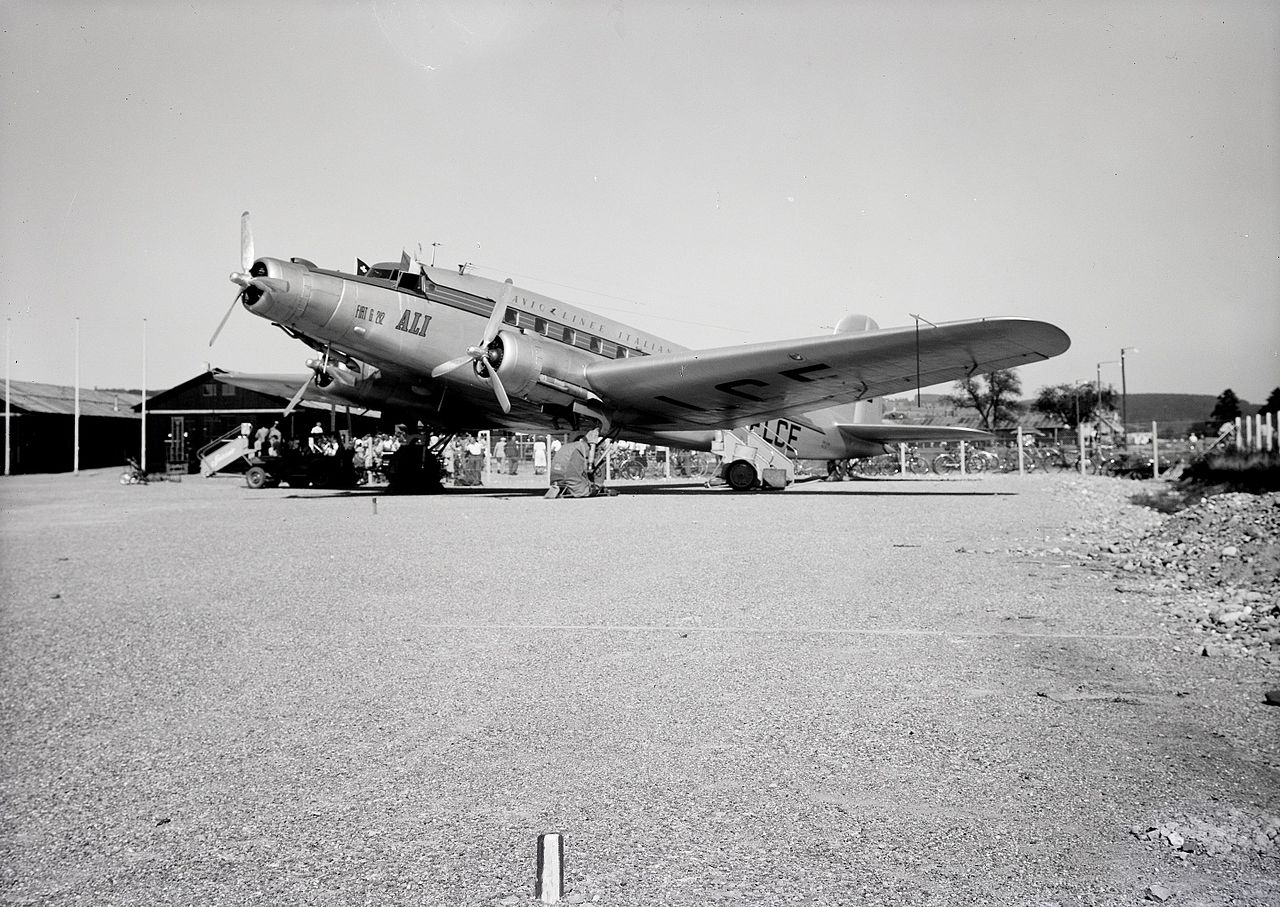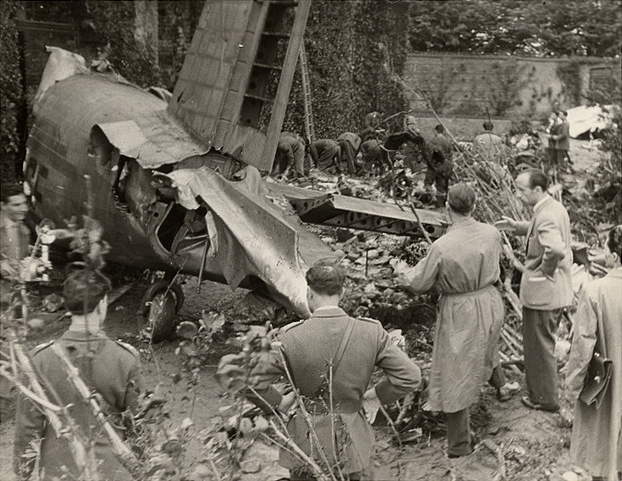
4 May 1949: At 5:04 p.m., Central European Time (16:04 UTC), a chartered Avio Linee Italiane Fiat G.212CP airliner, I-ELCE, was descending in very poor weather conditions for landing at the Aeroporto di Torino-Aeritalia (ICAO: LIMA). The flight crew was using a Non-Directional Beacon (NDB) to align itself with the airport’s Runway 28. This beacon provided no vertical course (“glide slope”) guidance.
The airliner crashed into a wall of the Basilica di Superga, located on a 672 meter (2,205 feet) hill east of Turin, and 12 kilometers (7.5 miles) from the runway. All 31 persons on board, the 4-man crew, and 27 passengers, were killed.
Most of the passengers were members of the Grande Torino football club (soccer, as it is known in the United States).

I-ELCE was a Fiat G.212CP, serial number 5. The G.212 is an all-metal, three-engine, low-wing monoplane with retractable landing gear. The crew consists of a pilot and co-pilot, a flight engineer and a radio operator. It could carry up to 34 passengers. Originally a military transport, the G.212A, the G.212CP variant was produced as a commercial airliner. There was also a cargo version, the G.212TP.
The G.212CP is 75 feet, 8 inches (23.063 meters) long with a wing span of 96 feet, 3 inches (29.337 meters) and overall height of 26 feet, 8 inches (8.128 meters). It has an empty weight of 24,742 pounds (11,223 kilograms) and maximum gross weight of 38,440 pounds (17,436 kilograms).
The G.212CP is powered by three 1,829.4-cubic-inch-displacement (29.978 liter) air-cooled, supercharged, Pratt & Whitney Twin Wasp S1C3-G two-row, 14-cylinder radial engines. These were rated at 1,200 horsepower at 2,700 r.p.m. at Sea Level for takeoff. The maximum continuous rating for normal operation was 1,050 horsepower at 2,550 r.pm., up to 7,500 feet (2,286 meters). Each engine drives a three-bladed constant-speed propeller through a 16:9 gear reduction. The S1C3-G is 48.19 inches (1.224 meters) long, 61.67 inches (1.566 meters) in diameter, and weighs 1,465 pounds (665 kilograms).
The G.212CP has a cruise speed of 160 knots (184 miles per hour/296 kilometers per hour), and maximum speed of 210 knots (242 miles per hour/389 kilometers per hour) at 12,100 feet (3,688 meters). Its service ceiling is 24,600 feet (7,498 meters), and its maximum range is 1,620 nautical miles (1,864 statute miles/3,000 kilometers).
The G.212 was produced from 1947 to 1950. The total number built is variously reported as 19 to 26.

Thanks to regular This Day in Aviation reader Paolo Nocilli for suggesting this topic.
© 2024, Bryan R. Swopes
Dear Bryan, heartfelt thanks for including this event.
I will send you photos of the Basilica of Superga.
While I was writing to you I heard the story of “Miss Charlotte”, a B-17 F that crashed on 10 September 1944 on Monte Miol in the Argentera Valley, during a mission to deliver weapons and
equipment to local partisans. I will send You a complete report of this event.
Thank you, Paolo.
4 man crew and 28 passengers = 32 deaths, not 31. RIP to all.
Thanks, Jerry, for catching my mistake.